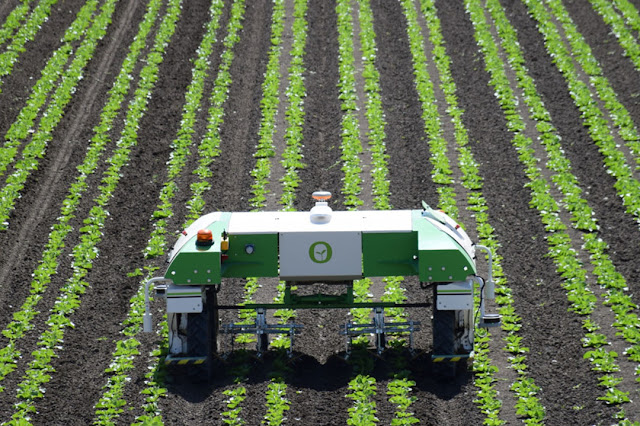Industrial Enzymes: Catalysts for a Greener Future
 |
| Industrial Enzymes |
Industrial
enzymes are those that are utilized on a commercial basis in a range of
sectors, including consumer goods, biofuels, chemicals, medicines, and food and
beverage manufacturing. Owing to recent developments, using isolated enzymes
for biocatalysis is thought to be more cost-effective than using entire cells.
Enzymes might be the target product or they can be employed as a unit activity
in a process to produce a desired result. The use of enzymes for industrial biological
catalysis has grown significantly in recent years because of their remarkable
chiral and positional selectivity, as well as their capacity to function in
mild environments.
In the realm of industrial biotechnology, Industry
Enzymes stand out as remarkable tools that drive efficiency,
innovation, and sustainability across a multitude of sectors. From food and
beverages to biofuels and pharmaceuticals, industrial enzymes have
revolutionized the way industries operate, providing eco-friendly solutions to
complex processes.
What Are
Industrial Enzymes?
Enzymes are biological catalysts that speed up chemical
reactions without being consumed in the process. In industrial contexts, they
facilitate processes that would otherwise require harsh chemicals or extreme
conditions. The use of enzymes enables industries to achieve desired outcomes
with greater efficiency and less environmental impact.
Key
Applications of Industrial Enzymes
Food and
Beverage Industry: Enzymes play a crucial role in the production of
various food and beverage products. In baking, enzymes such as amylases break
down starches into simpler sugars, enhancing dough quality and bread texture.
In brewing, enzymes help in the conversion of starches into fermentable sugars,
crucial for alcohol production. Proteases are used in the dairy industry to
improve cheese yield and texture.
Detergent
Industry: The inclusion of enzymes in laundry and dishwashing
detergents has significantly improved their cleaning power. Enzymes like
proteases, lipases, and amylases target specific stains such as protein, fat,
and carbohydrates, enabling effective cleaning at lower temperatures. This not
only enhances cleaning performance but also reduces energy consumption.
Biofuel
Production: Enzymes are vital in the production of biofuels, particularly
in the conversion of biomass into fermentable sugars. Cellulases and
hemicellulases break down cellulose and hemicellulose into sugars that can be
fermented to produce bioethanol. This enzymatic process is more sustainable and
environmentally friendly compared to traditional chemical methods.
Textile and
Leather Processing: In the textile industry, enzymes are used for fabric desizing,
biopolishing, and denim finishing, improving fabric quality and appearance. In
leather processing, enzymes assist in dehairing and bating, replacing toxic
chemicals and enhancing leather quality.
Pharmaceutical
Industry: Enzymes are integral to pharmaceutical manufacturing, aiding
in the synthesis of antibiotics, production of therapeutic proteins, and
development of drug delivery systems. Their specificity and efficiency make
them invaluable in producing high-purity pharmaceuticals.
Benefits of
Using Industrial Enzymes
Environmental
Friendliness: Enzymes reduce the need for harsh chemicals and high
temperatures, leading to lower energy consumption and less environmental
pollution. This aligns with the growing demand for sustainable industrial practices.
Specificity
and Efficiency: Enzymes are highly specific to their substrates, which
minimizes the formation of by-products and enhances product purity. Their
ability to accelerate reactions reduces processing times and increases
throughput, making industrial processes more efficient.
Biodegradability:
As natural proteins, enzymes are biodegradable and do not accumulate in
the environment, making them a safe and sustainable choice for various
applications.
Recent
Innovations in Industrial Enzymes
The field of industrial enzymes has witnessed significant
advancements, driven by biotechnological innovations:
Genetic
Engineering: Genetic modification allows for the engineering of enzymes
with enhanced stability, activity, and substrate specificity. This enables
enzymes to perform better under industrial conditions and expand their range of
applications.
Directed
Evolution: This technique mimics natural selection to evolve enzymes
with desirable traits. By creating and screening numerous enzyme variants, researchers
can identify those with superior properties, tailored to specific industrial
needs.
Immobilization
Techniques: Immobilizing enzymes on solid supports facilitates their
reuse in continuous processes, reducing costs and improving process control. This
innovation is particularly beneficial in large-scale industrial applications.
Enzyme
Cocktails: Combining multiple enzymes in a single formulation can
synergistically enhance process efficiency. This approach is especially useful
in complex processes such as biomass conversion, where different enzymes work
together to break down diverse substrates.
The Future
of Industrial Enzymes
As industries strive to reduce their carbon footprint and
adopt greener practices, the role of industrial enzymes becomes increasingly
important. The ongoing advancements in synthetic biology and metabolic
engineering promise to unlock new enzyme functionalities and applications.
Additionally, the integration of artificial intelligence in enzyme design and
optimization accelerates innovation, paving the way for even greater efficiency
and sustainability.
Industrial enzymes are catalysts for a greener future,
driving innovation and sustainability across diverse sectors. Their unique
properties and broad applicability make them indispensable tools in modern
industry. As technological advancements continue to push the boundaries of
enzyme capabilities, the potential for achieving more efficient and
environmentally friendly industrial processes grows. Embracing these biological
catalysts is not just a step forward for industries but a leap towards a more
sustainable and prosperous future.
Get more insights on Industrial
Enzymes
Get more related content on Industrial
Enzymes


Comments
Post a Comment